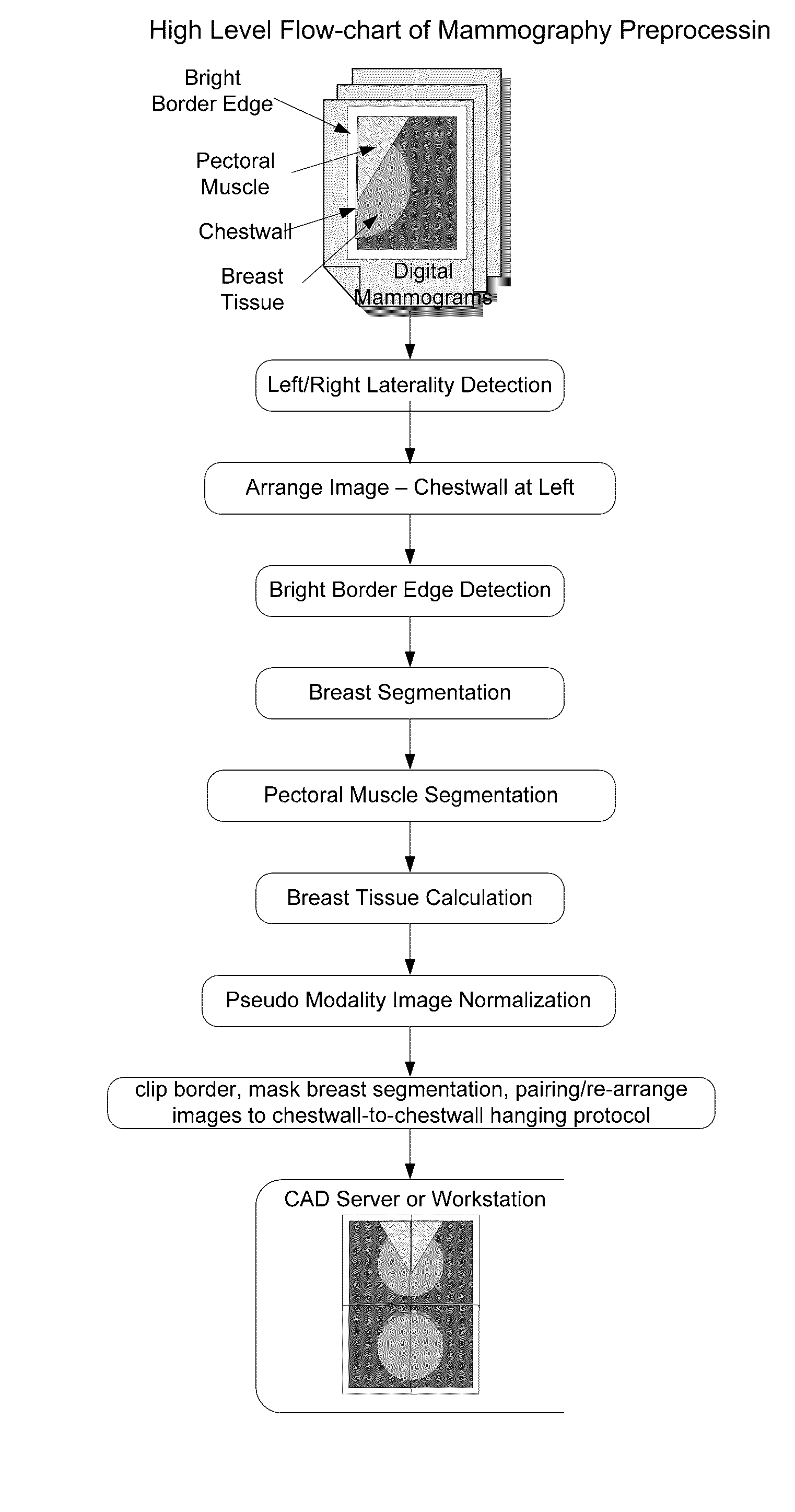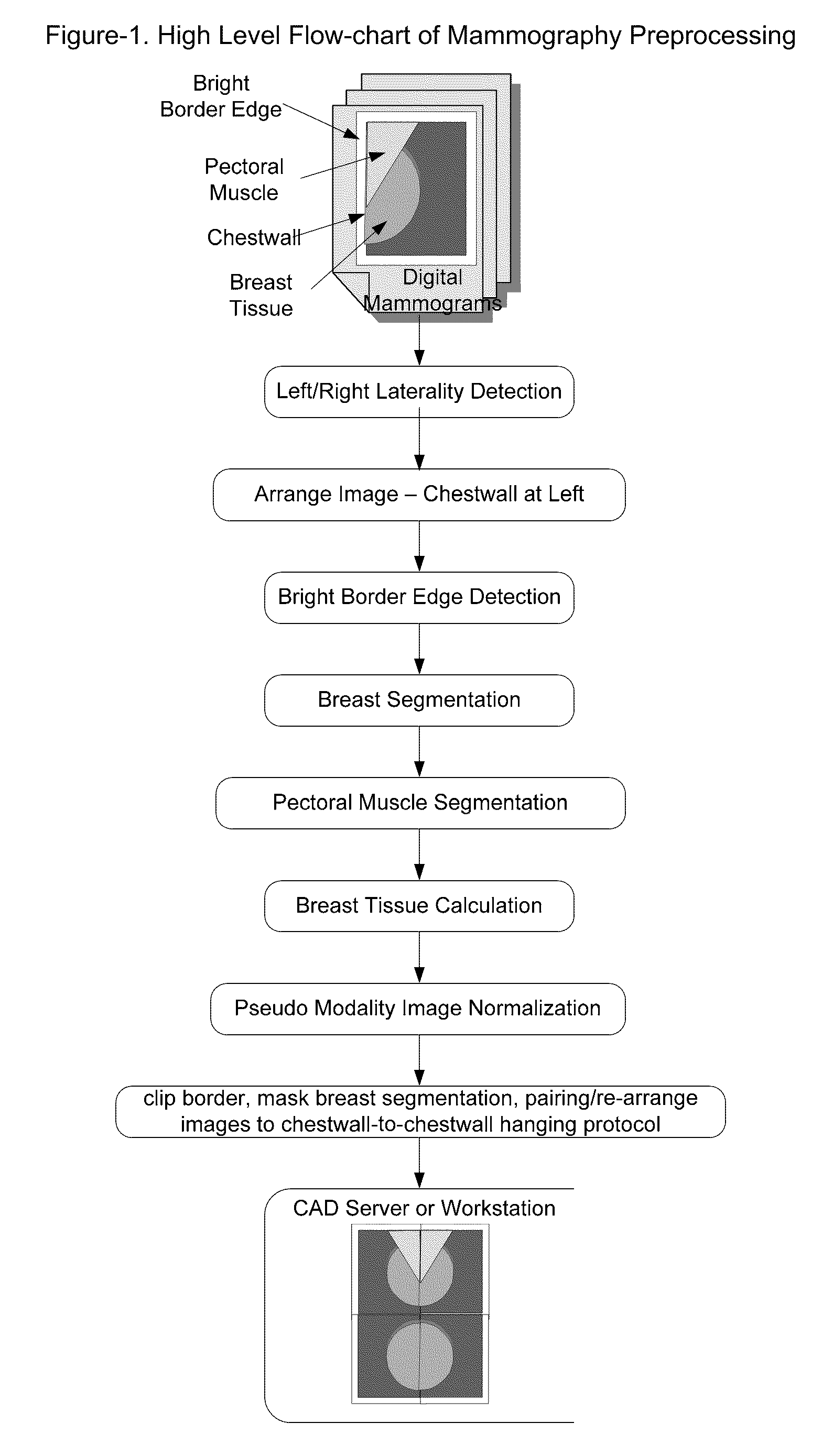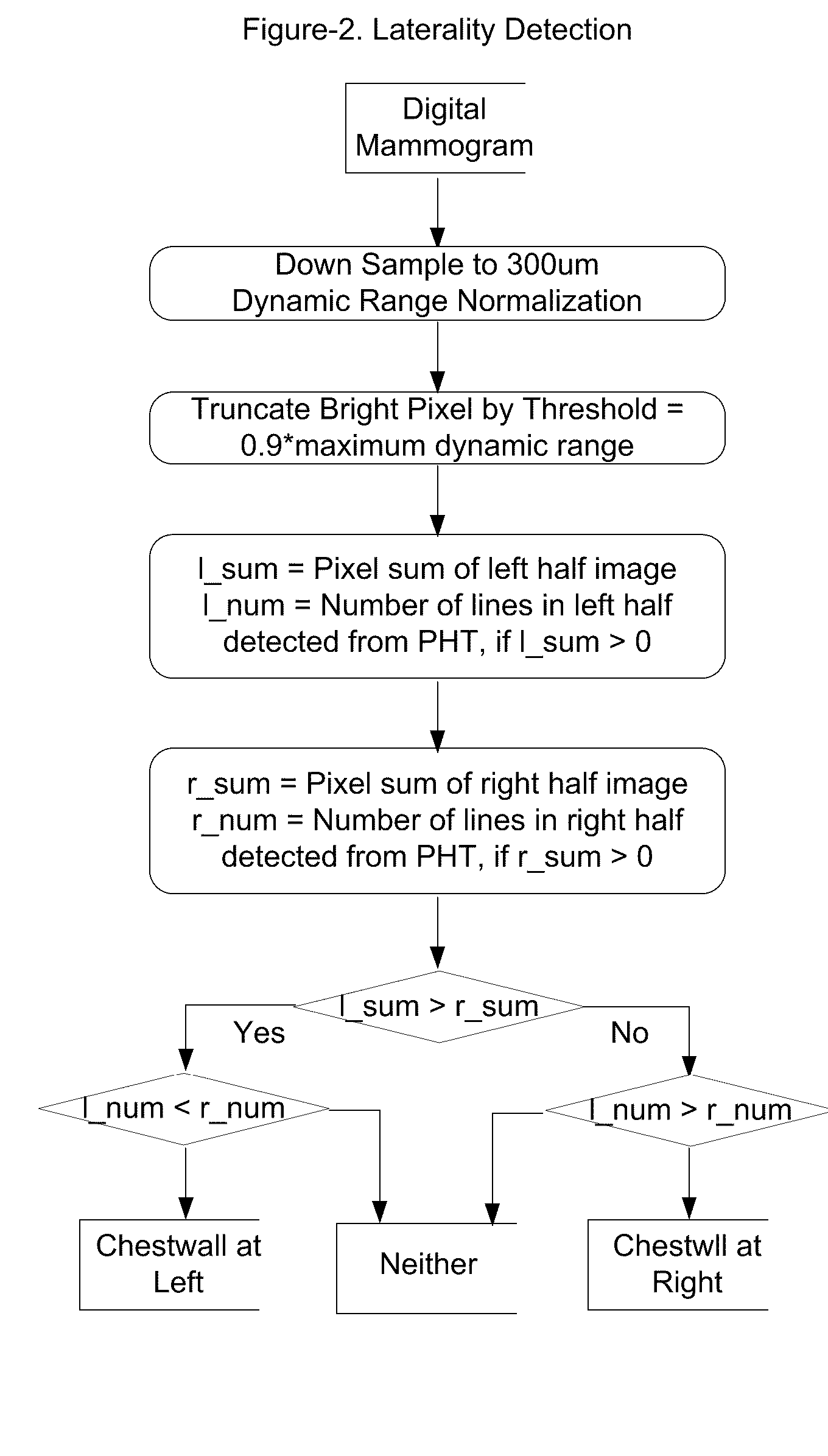Fast preprocessing algorithms for digital mammography CAD and workstation
a digital mammography and preprocessing algorithm technology, applied in the field of medical imaging systems, can solve the problems of not being able to accurately represent the curve shaped pectoral muscle segmentation result, processing using this type of algorithm is computationally slow, etc., and achieves automatic detection and faster and more accurate segmentation algorithms.
- Summary
- Abstract
- Description
- Claims
- Application Information
AI Technical Summary
Benefits of technology
Problems solved by technology
Method used
Image
Examples
Embodiment Construction
[0020] The mammography preprocessing steps, as shown in FIG. 1, include (1) detecting chestwall side, or left / right laterality of the mammogram image; (2) flipping the image along the vertical axial if the chestwall is not at left; (3) detecting bright or black gap between chestwall and the edge of the image; (4) segmenting breast tissue from the image background; (5) detecting the curved line separation between breast tissue and pectoral muscle; (6) use segmentation information to normalize the image to a consistent pseudo modality; (7) re-arranging the image so to produce mammography standard chestwall-to-chestwall hanging protocol.
[0021] As shown in FIG. 2, the idea of the detection of the chestwall side for left or right laterality is based on the assumption that the breast tissue intensity is mostly distributed at the chestwall side and the low intensity of the air background at the opposite side.
[0022] As shown in FIG. 3, continuing from the down-sampled image, and flipping ...
PUM
 Login to View More
Login to View More Abstract
Description
Claims
Application Information
 Login to View More
Login to View More - R&D
- Intellectual Property
- Life Sciences
- Materials
- Tech Scout
- Unparalleled Data Quality
- Higher Quality Content
- 60% Fewer Hallucinations
Browse by: Latest US Patents, China's latest patents, Technical Efficacy Thesaurus, Application Domain, Technology Topic, Popular Technical Reports.
© 2025 PatSnap. All rights reserved.Legal|Privacy policy|Modern Slavery Act Transparency Statement|Sitemap|About US| Contact US: help@patsnap.com



